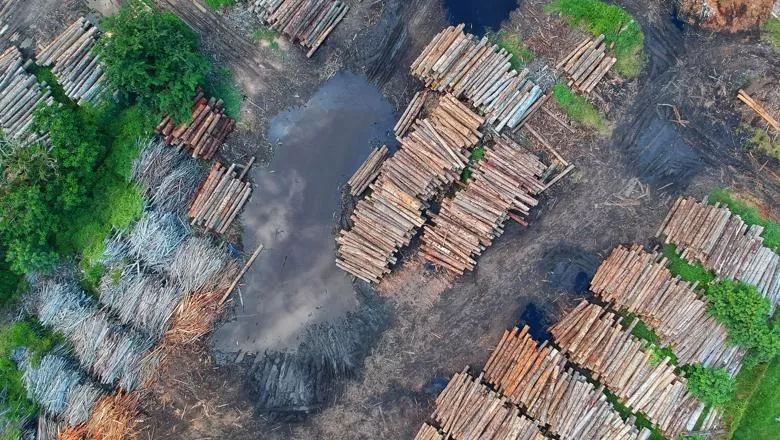Given that a key driver of deforestation on private land in Brazil is the global demand for soybeans and beef, showing that there have been differences in deforestation between protected areas containing private lands and those that don't will be useful for shaping future policy.
Dr James Millington, co-author and Reader in Landscape Ecology
19 April 2023
Brazilian conservation policy less effective on private lands
A policy designed to conserve forests has been less effective on privately-owned land in the Amazon due to an exemption for small property owners, leading to 14.6 million hectares of agricultural land not being restored.

In 2012, Brazil introduced a national conservation forest policy in an attempt to restore natural vegetation in the Amazon – a crucial measure in tackling climate change. However, an amnesty was granted to 80% of small property landowners.
Now a new study, published in Nature Communications Earth & Environment, has shown that this amnesty prevented the restoration of 14.6 million hectares of agricultural land, amounting to 2.4 gigatonnes of potential carbon stock that could have been held in natural vegetation (equivalent to almost five times the UK’s total greenhouse gas emissions in 2021).
The study also found that more than half of deforestation in the Brazilian Amazon has taken place within rural private properties, despite these properties being located in conservation areas covered by the national conservation forest policy.
The rate of deforestation on private land in these crucial biodiversity hotspots is also higher than in other public lands, such as conservation units and indigenous territories.
The study, involving Dr Millington from the Department of Geography, evaluated the impact of Brazil’s New Forest Code (NFC), introduced to reduce the loss of natural vegetation cover within privately owned rural lands.
Although deforestation in private rural land slowed down between 2012-2020, a later amnesty provision in the NFC released landowners from the obligation to restore natural vegetation up to the minimum threshold as required by the previous 1965 law.
The policy implementation attempted to create a record of all private rural properties and mandated that landowners declare property boundaries, including designated areas of protected natural vegetation on their land, known as legal reserves.
The study used this dataset of 4.3 million private properties in Brazil, along with other sources of data including satellite remote sensing, to evaluate the change in natural vegetation cover on private lands in the period before and after the implementation of the NFC.
Dr Millington said: “The findings of our work show the importance of assessing the efficacy of environmental policies on conservation actions through combinations of satellite remote sensing, land tenure data, and locally volunteered information.”
The lead author of the paper is Dr Ramon Bicudo da Silva, State University of Campinas in Brazil. This collaborative study with Dr Millington and other authors has been generated in-part by Dr da Silva’s visits to the Department of Geography in the summer of 2018 and in May 2022.

